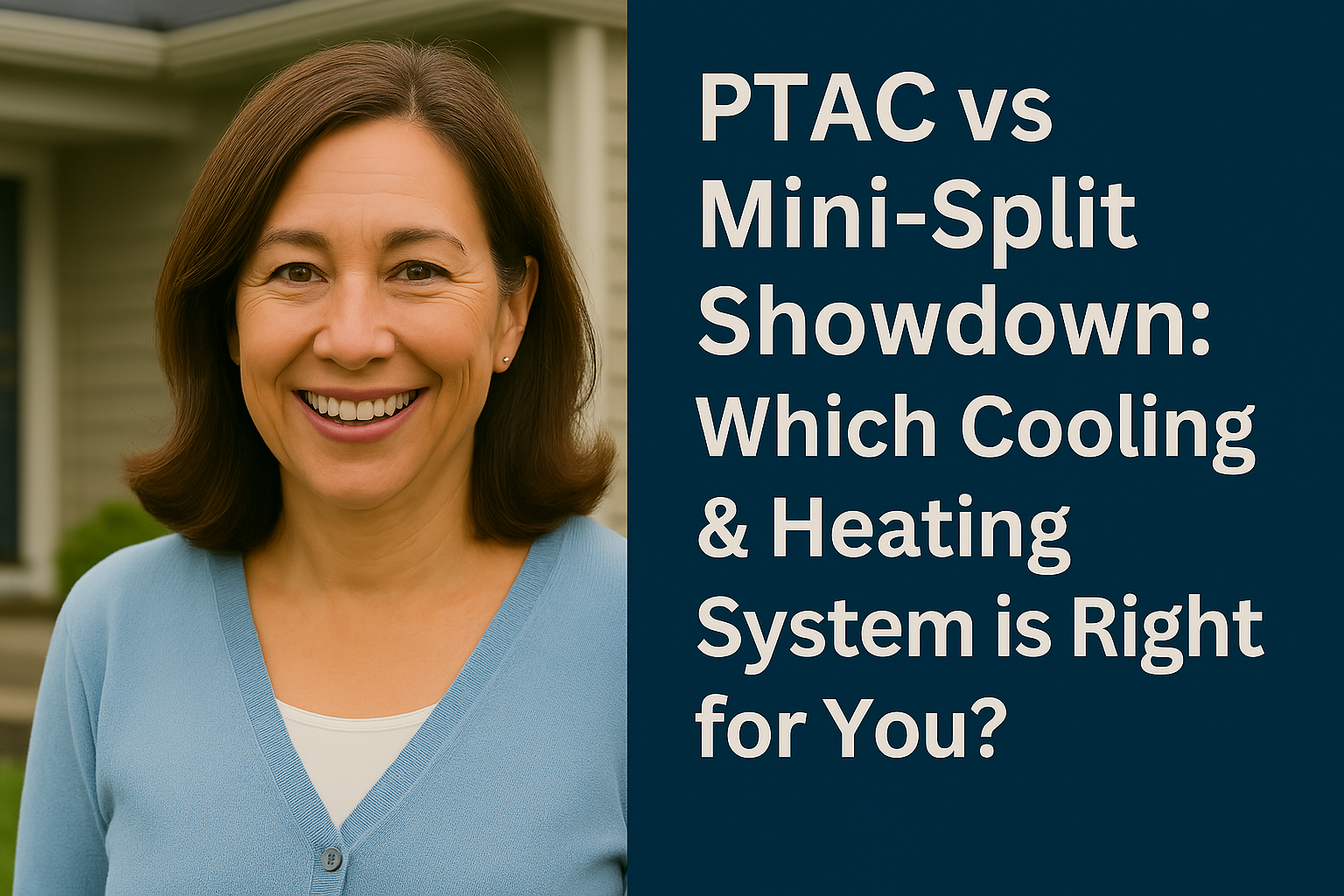🌬️ Hey there, HVAC explorer! Samantha here.
Let me guess—you’re trying to pick between a PTAC heat pump and a ductless mini-split system and the internet has you spinning like a fan stuck on high. 😅 Don’t worry—I’ve walked this road myself (let’s just say I spent a few too many nights researching in my 72°F “comfort zone”). So now, I’m here to lay it all out—clear, simple, and practical.
We're going to walk through everything: cost, energy efficiency, installation quirks, noise, and what actually works best depending on your room or setup.
Grab a lemonade—or a hot coffee if it’s chilly where you are—and let’s make this decision easy-peasy. 🍋☕️
💸 1. Cost Comparison: Who Wins the Budget Battle?
PTAC units are often the go-to for budget-conscious buyers. You can grab a unit (like one from The Furnace Outlet) for anywhere between $700–$1,200, plus about $100 more for a sleeve or power cord if you need one.
In contrast, ductless mini-splits can start around $1,500 and go up depending on how many zones you want cooled or heated. Professional installation is usually required—adding $500 to $2,000 to the bill.
Need a clearer breakdown? Carrier compares the pricing and install costs in a real-world way that makes sense for homeowners.
📝 Winner: If you want a simple system with low upfront cost, PTACs get the gold medal. But mini-splits can save you money over time with better efficiency (more on that below).
⚡ 2. Energy Efficiency: Lower Bills or Bust
Here’s where mini-splits shine. Thanks to inverter compressors, they adjust output dynamically—like a dimmer switch for your HVAC system. This makes them far more efficient than older PTAC models.
Most mini-splits boast SEER ratings of 20+, while PTACs are typically around 10–12 EER.
Energy.gov breaks down how mini-splits work and why their zoning and inverter technology leads to serious energy savings—especially in climates with both cold and hot seasons.
📝 Winner: Mini-split, hands down. Over time, you’ll likely spend less on electricity while enjoying more precise control.
🔇 3. Noise Levels: Who Keeps It Quiet?
If you’ve ever stayed in a hotel room with a noisy PTAC unit—you know. 😬 While newer models have improved, most PTACs run between 50–60 decibels. That’s like having a fridge humming constantly in your room.
Mini-splits, though? Their indoor units run as low as 20–30 decibels—like a whisper. And the compressor? It’s outside.
For a good look at noise levels and comparisons, This Old House shares an honest guide to which models are truly whisper-quiet and which hum a little louder than you'd like.
📝 Winner: Mini-split—especially for bedrooms, nurseries, or home offices.
🛠️ 4. Installation: DIY-Friendly or Call the Pros?
PTAC systems win for simplicity. If your space already has a wall sleeve, you can plug and play. Even if you're starting fresh, a handyman or skilled DIYer can install one with a little framing and a sleeve kit.
Mini-splits, though sleek, often require professional installation. Refrigerant lines, wall brackets, outdoor mounting, and electrical connections—it's a job for someone with EPA certification.
If you want to understand installation scope for both systems, Home Depot’s mini-split install guide is a great overview of what’s involved.
📝 Winner: PTAC, for easy installs and lower labor costs. But if you want something hidden and permanent, mini-splits might be worth the extra effort.
🧼 5. Maintenance & Lifespan
Here’s the good news—both systems are pretty low-maintenance. PTACs generally need filter cleaning and occasional vacuuming of coils. And because all parts are in one box, service is straightforward.
Mini-splits require more attention to the outside condenser, plus line set inspections and professional servicing every few years.
Want a quick cleaning tutorial? Homelectric has a step-by-step guide on cleaning PTAC units without breaking a sweat.
📝 Winner: Tie. PTACs are easier for DIY upkeep; mini-splits are longer-lasting when serviced regularly.
🧩 What’s Right for Your Space?
Let’s break it down by situation:
| Situation | Winner |
|---|---|
| Have an existing wall sleeve | PTAC |
| Want near-silent operation | Mini-split |
| Renting or budget-conscious | PTAC |
| Designing for aesthetics | Mini-split |
| Need fresh air ventilation | PTAC |
| Planning multi-zone control | Mini-split |
| Living in extreme cold or heat | Mini-split |
🎯 Samantha’s Smart Shopper Verdict
So what’s the final verdict? Well, like with all great choices in life—it depends on what you need:
-
If you're budget-conscious, doing a single-room upgrade, or already have a wall sleeve, a PTAC unit is quick, affordable, and easy to maintain.
-
But if you’re after a whisper-quiet system, love sleek design, and want lower bills over time, a mini-split is absolutely worth the investment.
And if you’re leaning PTAC, I highly recommend browsing the PTAC Heat Pump Collection at The Furnace Outlet. They’ve got energy-efficient R-32 units that check all the boxes for comfort and compliance.
Want to know more about smart thermostats for your R-32 units? Visit Smart Thermostats for PTAC Heat Pumps: How Wall Units Got a Brain Upgrade.
👋 Until next time, breathe easy!
I hope this breakdown helped clear the air for you (pun intended 😄). Making HVAC decisions doesn’t have to feel like deciphering ancient blueprints. Whether you choose PTAC or mini-split, the most important thing is that it fits your space, your style, and your peace of mind.
You’ve got this—and if you have more questions, I’ll be right here with the research, ready to help. Stay cool (or warm!), my friend.
– Samantha the Smart Shopper 💙







